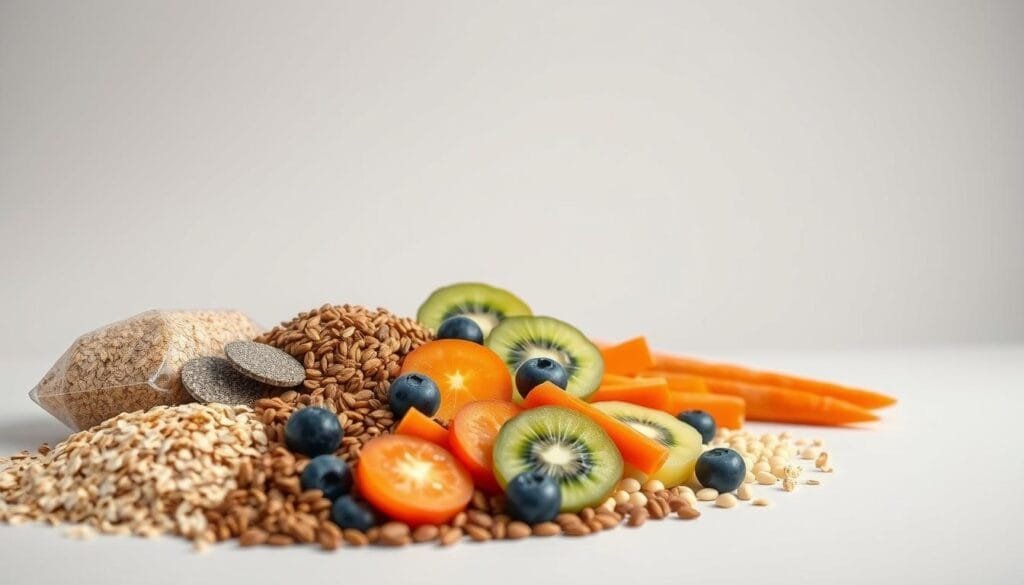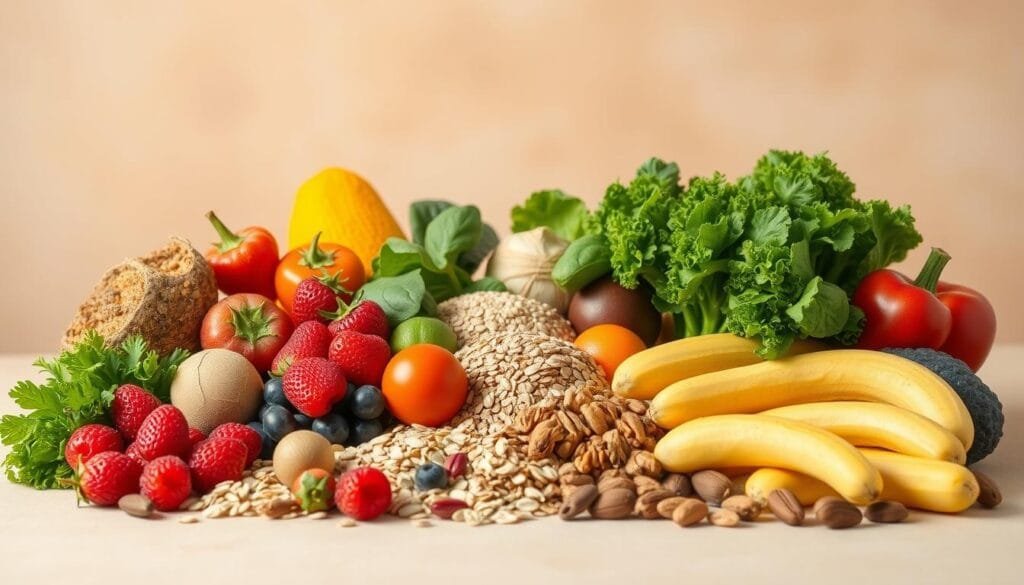Currently Empty: RM0.00
As people age, maintaining a healthy digestive system becomes crucial. Proper nutrition plays a key role in promoting wellness and vitality. At Wellness Concept Malaysia, experts guide individuals toward balanced diets rich in essential nutrients.
Scientific research highlights the health benefits of certain dietary components. These elements help combat age-related concerns while enhancing digestion. Personalized wellness plans ensure tailored solutions for every individual.
Need expert advice? Reach out via WhatsApp at +60123822655 during business hours (Mon-Fri 9:30am-6:30pm, Sat-Sun 10am-5pm). Discover how simple dietary adjustments can make a lasting impact.
Key Takeaways
- Essential nutrients support long-term wellness and digestion.
- Wellness Concept Malaysia offers personalized nutrition guidance.
- Scientific studies confirm the role of diet in longevity.
- Consultations are available via WhatsApp for convenience.
- Simple dietary changes can improve gut health.
Why Fiber Is Essential for Healthy Aging and Digestion
Nutrition plays a vital role in supporting long-term wellness as the body changes. Certain dietary components, like fiber, offer unique advantages for both vitality and the digestive system. Research highlights how these nutrients combat age-related concerns while promoting gut health.
The Science Behind Fiber’s Anti-Aging Benefits
Fiber comes in two forms, each with distinct roles. Soluble types help regulate blood sugar, while insoluble varieties add bulk to stool, preventing constipation. Both contribute to a balanced digestive tract.
When fermented by gut bacteria, fiber produces short-chain fatty acids (SCFAs). These compounds strengthen the intestinal lining and support immunity. Studies link SCFAs to reduced inflammation, a key factor in longevity.
How Fiber Supports Digestive Health
- Insoluble fiber requires adequate water intake to function optimally, easing bowel movements.
- Regular consumption may lower risks of IBS symptoms and hemorrhoids.
- The WHO recommends 25g–38g daily for adults to maintain gut balance.
For more insights, explore the health benefits of fiber in our detailed guide. Small dietary adjustments can yield significant improvements over time.
Types of Fiber and Their Unique Benefits
Not all fiber works the same way—each type offers unique benefits for your body. Soluble and insoluble varieties play distinct roles, from supporting heart health to keeping your digestive system running smoothly. Choosing the right balance can optimize wellness at any age.

Soluble Fiber: Heart Health and Blood Sugar Control
Soluble fiber dissolves in water, forming a gel-like substance that slows digestion. This helps regulate blood sugar levels and lowers LDL cholesterol, reducing cardiovascular risks. Foods like oats, apples, and Brussels sprouts (6.4g per cooked cup) are excellent sources.
Research shows soluble fiber also feeds beneficial gut bacteria, producing compounds that combat inflammation. For a deeper dive, explore how soluble fiber enhances gut health.
Insoluble Fiber: Gut Health and Constipation Relief
Insoluble fiber acts as nature’s broom, sweeping through the colon to prevent constipation. It adds bulk to stool, which is why drinking enough water is crucial. Whole grains, carrots (2.3g per ½ cup cooked), and sweet potato skins (3.8g per tuber) are packed with this roughage.
- Gradual intake is key—sudden increases may cause bloating.
- Pair quinoa (8g/cup) with roasted vegetables for a fiber-rich meal.
- Air-popped popcorn offers 5.8g per 3 cups—a crunchy, satisfying snack.
Combining both fiber types ensures comprehensive digestive support. Start small and adjust based on your body’s response.
Top High-Fiber Foods to Include in Your Diet
Smart food choices can transform how the body processes nutrients daily. Prioritizing ingredients rich in roughage ensures smoother digestion and sustained energy. Here’s a breakdown of the best options to add to meals.

Fruits Rich in Roughage: Pears, Apples, and Berries
Pears lead the pack with 6g per medium fruit, while apples (4.4g) offer soluble benefits. Berries like raspberries deliver 8g per cup—perfect for snacks or yogurt toppings.
Vegetables and Legumes: Broccoli, Lentils, and Chickpeas
Broccoli provides 5g per cooked cup, alongside vitamin C. Legumes shine with lentils (15.6g/cup) and chickpeas (12.5g), ideal for soups or salads.
Whole Grains and Seeds: Oats, Quinoa, and Chia
Oats provide 4g per serving, great for breakfast. Quinoa’s 5g per cup makes it a versatile base. Chia seeds pack 10.6g per ounce—stir into smoothies or make pudding.
- Grain comparison: Barley (6g/cup) outperforms brown rice (3.5g).
- Try overnight oats with chia for a morning boost.
- Flaxseed offers 8g per ounce plus omega-3s.
“Focus on whole foods over ‘fiber-fortified’ processed items for optimal nutrient absorption.”
Simple swaps like farro (6g/cup) instead of white rice elevate meals. Gradually increase intake to avoid bloating and drink plenty of water.
Practical Tips for Boosting Your Fiber Intake
Transitioning to a fiber-rich diet requires strategy to maximize benefits while minimizing discomfort. Small, intentional changes support the digestive system while adapting to higher roughage intake.
Simple Swaps for a High-Fiber Diet
Start by replacing refined grains with whole alternatives like quinoa or barley. These offer 5–8g per cup, doubling the roughage of white rice. For snacks, opt for air-popped popcorn (5.8g/3 cups) over chips.
Pro tip: Pressure-cooking legumes reduces gas-inducing compounds. Pair beans with digestive enzymes to ease bloating during the adjustment phase.
How to Avoid Common Fiber-Related Discomforts
Sudden increases can cause 3–7 days of bloating. Begin with soluble sources like oats or apples, then gradually add insoluble varieties. Hydration is critical—aim for 35ml of water per kg of body weight daily.
- Low-FODMAP options like kiwi or oatmeal reduce discomfort for sensitive stomachs.
- Soak legumes overnight to minimize gas production.
“Consult a healthcare provider before using psyllium supplements to avoid unintended side effects.”
Conclusion: Embrace Fiber for Long-Term Wellness
Personalized dietary choices support lifelong wellness goals. Aim for 25–38g daily to maintain digestive health and prevent disease. Remember, one size doesn’t fit all—tailored plans work best.
Wellness Concept Malaysia offers free consultations to create custom nutrition strategies. Reach out via WhatsApp at +60123822655 for expert advice.
Their team is available during business hours (Mon–Fri 9:30am–6:30pm, Sat–Sun 10am–5pm). Start your journey toward long-term wellness today.
FAQ
How does fiber support healthy aging?
It helps regulate blood sugar, lowers cholesterol, and keeps the digestive system running smoothly. Studies show it may reduce the risk of chronic diseases linked to aging.
What’s the difference between soluble and insoluble fiber?
Soluble dissolves in water, forming a gel that slows digestion and stabilizes glucose levels. Insoluble adds bulk to stool, preventing constipation and promoting gut health.
Which foods are highest in fiber?
Lentils, black beans, oats, chia seeds, and vegetables like broccoli and Brussels sprouts pack the most per serving. Fruits like pears and raspberries are also great choices.
How much fiber should adults aim for daily?
Women need about 25 grams, while men should target 38 grams. Start slow if increasing intake to avoid bloating or discomfort.
Can fiber help with weight management?
Yes! High-fiber foods keep you full longer, reducing overeating. They also tend to be lower in calories while providing essential nutrients.
What are easy ways to add more fiber to meals?
Swap white rice for quinoa, snack on nuts instead of chips, or blend flaxseeds into smoothies. Even peeling fruits like apples less often boosts intake.



